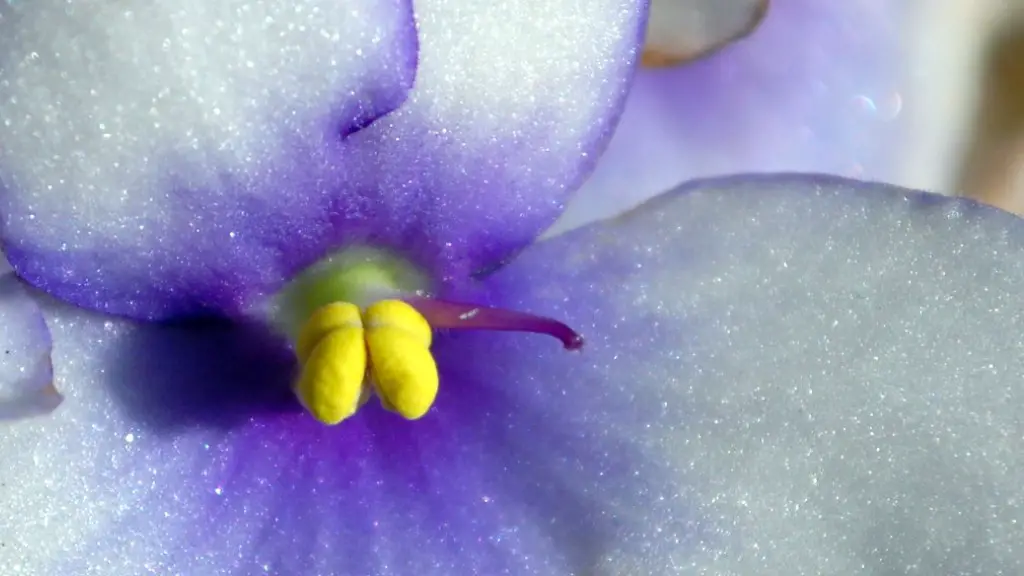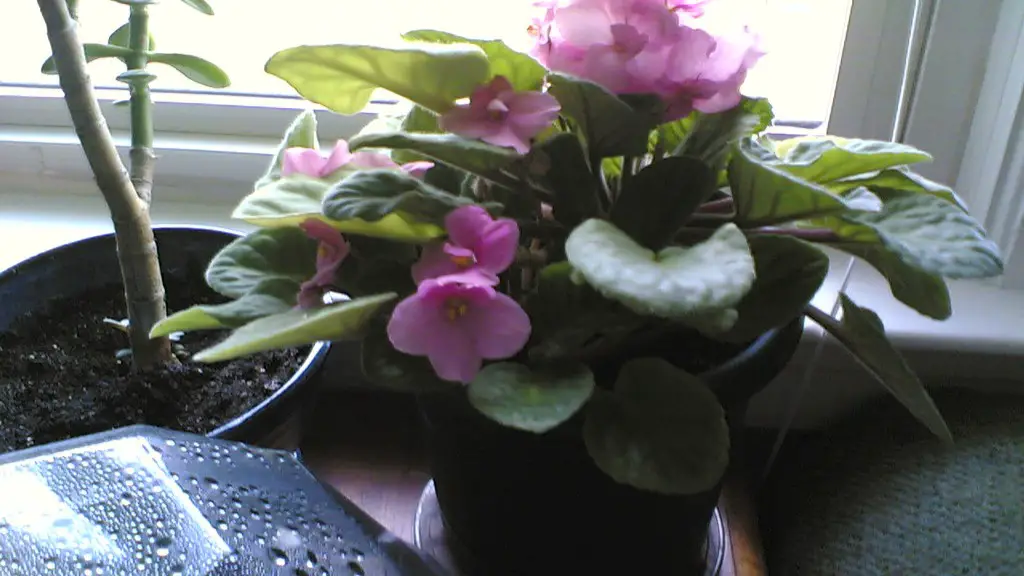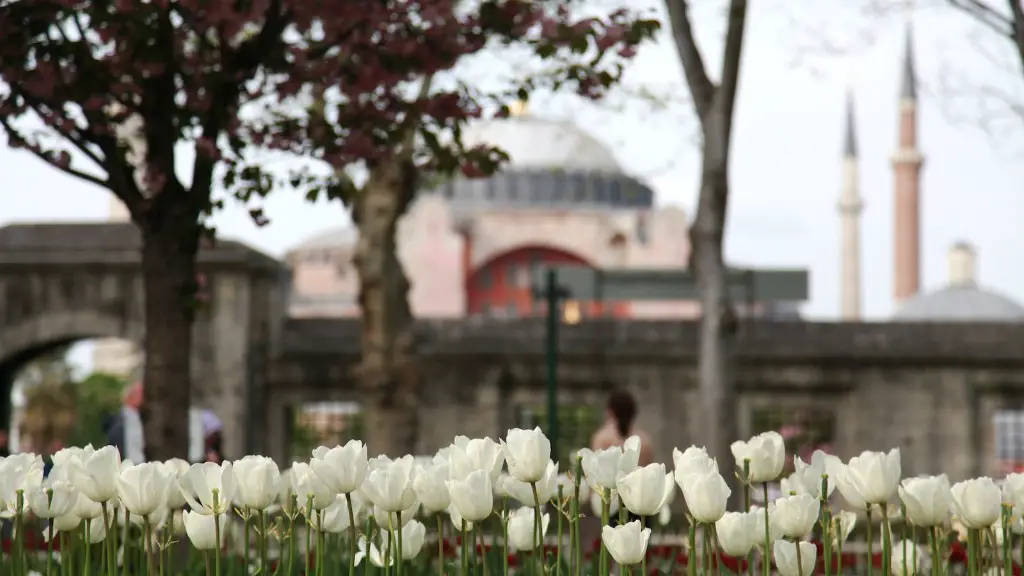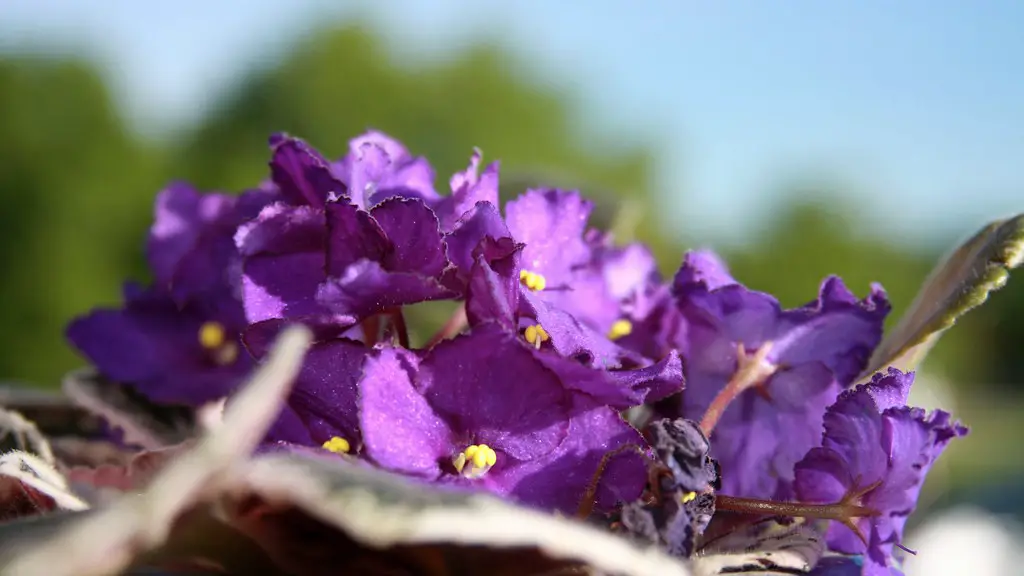African violets are one of the most popular houseplants, and they’re also one of the easiest to care for. But even the most dedicated african violet owner will find that their plants need to be trimmed back from time to time. Here are a few tips on how to do it:
1. First, identify the leaves that need to be trimmed. African violets typically produce new leaves from the center of the plant, so the oldest leaves are the ones that will need to be trimmed.
2. Use a sharp pair of scissors or shears to cut the leaves off at the base.
3. Be sure to trim off any brown or yellow leaves, as these are no longer photosynthesizing and are just taking up space.
4. Once you’ve trimmed the leaves, you can either throw them away or compost them.
5. Finally, give your african violet a good watering and fertilizing, and it will soon produce new leaves.
If you are looking to cut back your African violets, the best time to do so is in the late winter or early spring. This will give the plants a chance to recover from any damage that may have been done during the pruning process. When pruning, be sure to remove any dead or dying leaves, as well as any that are crowding the plant. You can also trim back the stems of the plant to help promote new growth.
Should you cut back African violets?
Pruning African Violet leaves is important to keeping your plant healthy. Remove three or more bottom leaves every month to help make room for new growth and to give the remaining foliage space to stretch out. Remove any dead or dying flowers during leaf pruning to free up even more energy for the plant.
To keep your African violet healthy and encourage new growth, it’s important to remove the older leaves. Take care to cut the stem as close to the stalk as possible, without digging into your plant. Alternatively, you can pinch the leaves off with your fingers. African violets grow from the crown out, meaning the leaves closest to the soil are the oldest.
What to do with an overgrown African violet
If you have an African violet that is leggy, the best way to combat this is to repot the plant and fertilize it with Espoma’s Violet! liquid plant food. This will help keep your plant growing new leaves, which will keep it from becoming leggy, and will also enhance the colors of your flowers.
If the African violet stem is bare and leggy more than an inch (25 cm), the best method of saving it is cutting the plant off at the soil level and re-rooting it. Fill a pot with a well-draining soil mix and cut the African violet stems at the soil level. Remove any dead or sickly foliage.
How do you get African violets to bloom again?
African violets are a type of flower that many people enjoy having in their home. They are relatively easy to care for, but sometimes they can stop blooming. If this happens, there are a few things you can do to encourage them to start blooming again.
First, make sure they are getting enough light. African violets need bright, indirect light in order to bloom. If they are not getting enough light, they may start to produce fewer flowers.
Second, turn up the humidity. African violets like humid conditions in order to bloom. If the air in your home is too dry, try using a humidifier or placing the pot on a tray of pebbles and water.
Third, replenish essential nutrients. African violets need regular fertilizing in order to bloom. If you have not been fertilizing regularly, try doing so every two weeks.
Fourth, keep it pleasant. African violets prefer a temperature range of 65-75 degrees Fahrenheit. If it is too cold or too hot, they may stop blooming.
Fifth, choose the right soil. African violets need a well-draining, slightly acidic soil in order to bloom. If your
If your African violet plant starts to grow tall, thin leaves, it is likely receiving insufficient sunlight. The solution is to move your plant to a brighter area of your home where it will receive more light.
How long do African violets live?
African violets should be repotted every two to three years to ensure they have fresh soil and room to grow. Remember to use a potting mix specifically designed for African violets, as regular potting soil can be too dense and cause the plant to suffocate.
If you have success getting your African Violet to bloom, be sure to pinch or deadhead spent blooms. This allows the plant to continue to put energy into creating more buds/blooms and beautiful foliage.
How do you keep African violets blooming all year
If you’re having trouble getting your African violet to bloom, it’s likely because it’s not getting enough light. These plants need indirect sunlight, as direct sunlight can burn the leaves. Choose a north- or east-facing window for best results, and keep plants away from cold glass. Rotate the pot once a week so all leaves receive light.
African violets are a popular houseplant that is easy to care for and propagate. One way to propagate them is by cutting the plant in half. This is a great way to create new plants for your home or office. Take a look at the guide above to learn how to do it!
Why do African violets grow sideways?
If an African Violet is left unattended, it may develop a long neck that eventually tilts sideways due to the weight of the crown. This is known as a “goose neck.” A neck can also resemble a palm tree/coconut tree trunk.
African violets and rex begonias both respond well to propagation from leaf cuttings. To take a leaf cutting, use a whole leaf or even just a portion of a leaf. Cut the leaf at a node, the point where the leaf attaches to the stem. Because a detached leaf will wilt quickly, it’s important to have your pot of soil ready before taking the cutting. node, the point where the leaf attaches to
Do African violets need bigger pots
When it comes to African violets, it’s best to err on the side of a smaller pot. These plants do best when they are slightly pot-bound, so choose a pot that’s on the smaller side. A good rule of thumb is to choose a pot that’s 3-4 inches in diameter for a standard African violet plant.
Repotting an African Violet is a relatively easy task that can be done to help the plant thrive. By repotting the plant, you are essentially giving it more room to grow and develop its root system. This is especially important if the plant has become rootbound, as this can lead to a number of problems. When repotting, be sure to use a pot that is only slightly larger than the current one, as this will help to prevent the roots from becoming too stressed. Additionally, be sure to use a well-draining potting mix and water the plant thoroughly after repotting.
Why do African violets get long necks?
If you notice your African violet’s neck starting to lengthen and the lower leaves falling off, it’s probably due to normal development. The plant is starting to look like a palm tree. However, if this neck lengthening is excessive, it may be due to a problem with the plant.
African violets are a type of plant that can bloom nearly year-round. If the correct conditions are provided, they can bloom 10-12 months out of the year. Each bloom typically lasts for 2-3 weeks.
Conclusion
There are a few ways to cut back African violets. One way is to use sharp, clean scissors to cut off any dead or dying leaves. another way is to use a small, sharp knife to cut away any damaged or diseased areas of the plant. Finally, you can cut back African violets to encourage new growth by snipping off the tips of the leaves.
African violets are usually propagated by leaf cuttings, but sometimes you may need to cut back the plant. This is typically done to encourage new growth, or to shape the plant. To cut back an African violet, use a sharp knife or pair of shears, and cut the stem back to the desired length. Be sure to make a clean cut, and remove any leaves that are below the cut.





